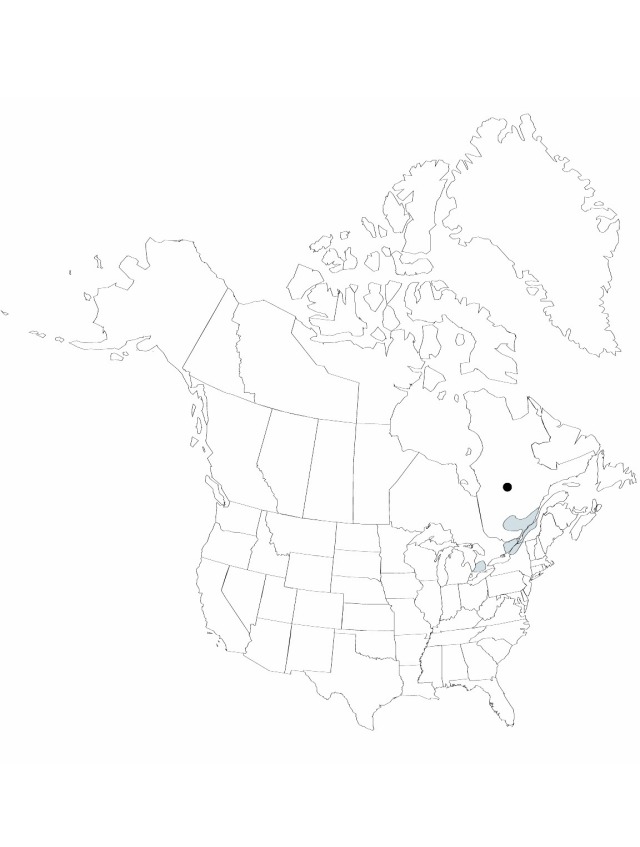Difference between revisions of "Hydrocharis morsus-ranae"
Sp. Pl. 2: 1036. 1753.
FNA>Volume Importer |
imported>Volume Importer |
||
| (6 intermediate revisions by 2 users not shown) | |||
| Line 8: | Line 8: | ||
}} | }} | ||
|common_names=European frog-bit | |common_names=European frog-bit | ||
| + | |special_status={{Treatment/ID/Special_status | ||
| + | |code=I | ||
| + | |label=Introduced | ||
| + | }}{{Treatment/ID/Special_status | ||
| + | |code=F | ||
| + | |label=Illustrated | ||
| + | }} | ||
|basionyms= | |basionyms= | ||
|synonyms= | |synonyms= | ||
| Line 17: | Line 24: | ||
}}<!-- | }}<!-- | ||
| − | --><span class="statement" id="st-undefined" data-properties=""><b>Herbs,</b> to 20 cm. <b>Rhizomes</b> absent; stStolon buds with 1 root. <b>Leaves</b> floating or, in dense vegetation, emergent; blade 1.2–6 × 1.3–6.3 cm; primary veins forming 75–90° angle with midvein, broadly curving, aerenchyma confined to midvein region (not margin to margin as in Limnobium), individual aerenchyma space (located ca. 1 mm from either side of midvein) 0.1–0.5 mm across its longest axis, 0.1–0.5 mm wide, 1 mm from midvein. <b>Flowers</b>: staminate flowers 1–5 in each spathe; pedicel to 4 cm; stamens 9–12 in 4 whorls; filaments basally not obviously connate; pistillate flowers solitary; pedicels to 9 cm; styles 2-fid for less than ½ length. <b>Seeds</b> 1–1.3 mm. <b>2n</b> = 28 (Netherlands).</span><!-- | + | --><span class="statement" id="st-undefined" data-properties=""><b>Herbs,</b> to 20 cm. <b>Rhizomes</b> absent; stStolon buds with 1 root. <b>Leaves</b> floating or, in dense vegetation, emergent; blade 1.2–6 × 1.3–6.3 cm; primary veins forming 75–90° angle with midvein, broadly curving, aerenchyma confined to midvein region (not margin to margin as in <i>Limnobium</i>), individual aerenchyma space (located ca. 1 mm from either side of midvein) 0.1–0.5 mm across its longest axis, 0.1–0.5 mm wide, 1 mm from midvein. <b>Flowers</b>: staminate flowers 1–5 in each spathe; pedicel to 4 cm; stamens 9–12 in 4 whorls; filaments basally not obviously connate; pistillate flowers solitary; pedicels to 9 cm; styles 2-fid for less than ½ length. <b>Seeds</b> 1–1.3 mm. <b>2n</b> = 28 (Netherlands).</span><!-- |
-->{{Treatment/Body | -->{{Treatment/Body | ||
| Line 24: | Line 31: | ||
|elevation=10–50 m | |elevation=10–50 m | ||
|distribution=Ont.;Que.;N.Y.;Eurasia. | |distribution=Ont.;Que.;N.Y.;Eurasia. | ||
| − | |discussion=<p>Hydrocharis morsus-ranae was planted in ponds beside Dow’s Lake in the Central Experimental Farm Arboretum at Ottawa in 1932 (P. M. Catling and W. G. Dore 1982). It apparently escaped from these ponds; by 1939 it was found in the Rideau Canal and by 1967 in the St. Lawrence River from Montreal as far as Lake St. Peter. It had spread into Lake Ontario, Lake Erie, and a couple of localities in New York (Catling and Dore 1982).</p> | + | |introduced=true |
| + | |discussion=<p><i>Hydrocharis morsus-ranae</i> was planted in ponds beside Dow’s Lake in the Central Experimental Farm Arboretum at Ottawa in 1932 (P. M. Catling and W. G. Dore 1982). It apparently escaped from these ponds; by 1939 it was found in the Rideau Canal and by 1967 in the St. Lawrence River from Montreal as far as Lake St. Peter. It had spread into Lake Ontario, Lake Erie, and a couple of localities in New York (Catling and Dore 1982).</p> | ||
|tables= | |tables= | ||
|references={{Treatment/Reference | |references={{Treatment/Reference | ||
| Line 36: | Line 44: | ||
-->{{#Taxon: | -->{{#Taxon: | ||
name=Hydrocharis morsus-ranae | name=Hydrocharis morsus-ranae | ||
| − | |||
|authority=Linnaeus | |authority=Linnaeus | ||
|rank=species | |rank=species | ||
| Line 51: | Line 58: | ||
|publication title=Sp. Pl. | |publication title=Sp. Pl. | ||
|publication year=1753 | |publication year=1753 | ||
| − | |special status= | + | |special status=Introduced;Illustrated |
| − | |source xml=https:// | + | |source xml=https://bitbucket.org/aafc-mbb/fna-data-curation/src/2e0870ddd59836b60bcf96646a41e87ea5a5943a/coarse_grained_fna_xml/V22/V22_382.xml |
|genus=Hydrocharis | |genus=Hydrocharis | ||
|species=Hydrocharis morsus-ranae | |species=Hydrocharis morsus-ranae | ||
Latest revision as of 20:31, 5 November 2020
Herbs, to 20 cm. Rhizomes absent; stStolon buds with 1 root. Leaves floating or, in dense vegetation, emergent; blade 1.2–6 × 1.3–6.3 cm; primary veins forming 75–90° angle with midvein, broadly curving, aerenchyma confined to midvein region (not margin to margin as in Limnobium), individual aerenchyma space (located ca. 1 mm from either side of midvein) 0.1–0.5 mm across its longest axis, 0.1–0.5 mm wide, 1 mm from midvein. Flowers: staminate flowers 1–5 in each spathe; pedicel to 4 cm; stamens 9–12 in 4 whorls; filaments basally not obviously connate; pistillate flowers solitary; pedicels to 9 cm; styles 2-fid for less than ½ length. Seeds 1–1.3 mm. 2n = 28 (Netherlands).
Phenology: Flowering spring–fall.
Habitat: Ponds, bays of rivers
Elevation: 10–50 m
Distribution

Introduced; Ont., Que., N.Y., Eurasia.
Discussion
Hydrocharis morsus-ranae was planted in ponds beside Dow’s Lake in the Central Experimental Farm Arboretum at Ottawa in 1932 (P. M. Catling and W. G. Dore 1982). It apparently escaped from these ponds; by 1939 it was found in the Rideau Canal and by 1967 in the St. Lawrence River from Montreal as far as Lake St. Peter. It had spread into Lake Ontario, Lake Erie, and a couple of localities in New York (Catling and Dore 1982).
